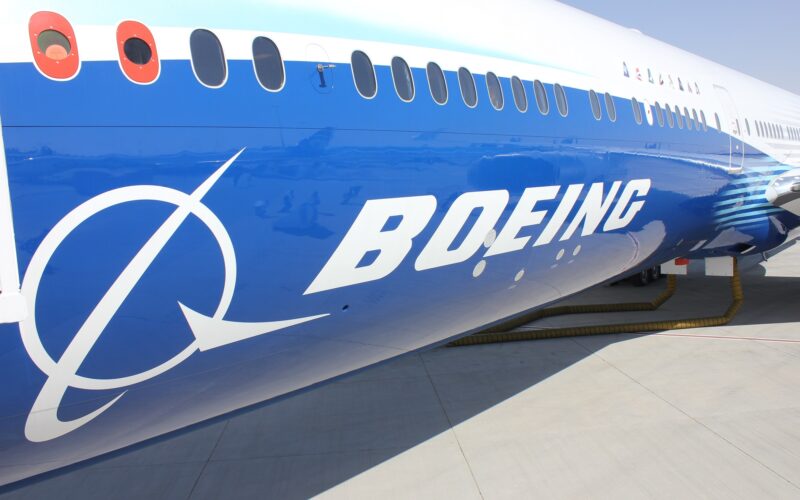Announcing its Q1 2023 financial results, Boeing stated that it still expects to deliver between 400 and 450 Boeing 737 MAX aircraft during the year, even though the program has been affected by production issues.
The production problems affecting the 737 MAX came to light in mid-April 2023, when Spirit AeroSystems notified Boeing that “a non-standard manufacturing process was used on two fittings in the aft fuselage section of certain 737 airplanes”. Barring the 737 MAX-9, all currently produced 737s were affected, including the 737 MAX-8 and the P-8 Poseidon, a military derivative of the 737 NextGeneration (NG) aircraft, the predecessor of the MAX.
“While near-term deliveries and production will be impacted as the program performs necessary inspections and rework, the program still expects to deliver 400-450 airplanes this year,” Boeing stated, adding that it plans to increase the production of the 737 to 38 per month sometime in 2023, increasing to 50 per month in 2025 or 2026. Similarly, the manufacturer will ramp up the production rate of the 787 to five per month in late 2023, increasing that number to 10 per month in 2025 or 2026.
Boeing currently produces 31 737 MAXs, three 767s, three 777/777Xs, and “low rates” of 787s per month, according to its commercial airplanes fact sheet.
Turbulent Boeing quarter
However, the 737 MAX was not the only program affected by production stoppages.
In February 2023, Boeing found a supplier analysis error related to the 787’s forward pressure bulkhead, causing the manufacturer to pause deliveries before resuming them several weeks later in March 2023. Boeing delivered just a single 767F (which could include the military derivative of the 767, the KC-46) in Q1 2023. The problem was that the center fuel wing tank was not primed and cleaned properly by a supplier, which could have potentially clogged fuel filters and subsequently reduced the flow of fuel to the aircraft’s engines.
Boeing delivered a 767F to FedEx Express on March 24, 2023.
The United States-based Original Equipment Manufacturer (OEM) delivered three more aircraft in the first quarter of the year than its main rival, Airbus.
Boeing earned $17.9 billion in revenue, ending the three-month period with a net loss of $425 million. In Q1 2022, the company had a net loss of $1.2 billion.
“We delivered a solid first quarter and are focused on driving stability for our customers,” said David Calhoun, the President and Chief Executive Officer (CEO) of Boeing. “We are progressing through recent supply chain disruptions but remain confident in the goals we set for this year, as well as for the longer term,” added Calhoun. The OEM pointed out that its total backlog stands at $411 billion, which includes over 4,500 commercial aircraft.
While free cash flow has significantly improved compared to Q1 2022, the OEM’s free cash flow was -$786 million in the first three months of 2023. Compared to Q4 2022, Boeing’s debt by the end of Q1 2023 was $1.6 billion lower, going from $57 billion to $55.4 billion.
Boeing Commercial Airplanes (BCA) earned $6.7 billion in revenue; a 60% increase compared to the same period last year. However, BCA’s 130 deliveries were not enough to make the division profitable, and it ended Q1 2023 with a loss of $615 million. Boeing’s Defense, Space & Security division earned $6.5 billion in revenue, posting an operating loss of $212, while the Global Services arm ended the quarter with revenues of $4.7 billion and an operating profit of $847 million.

